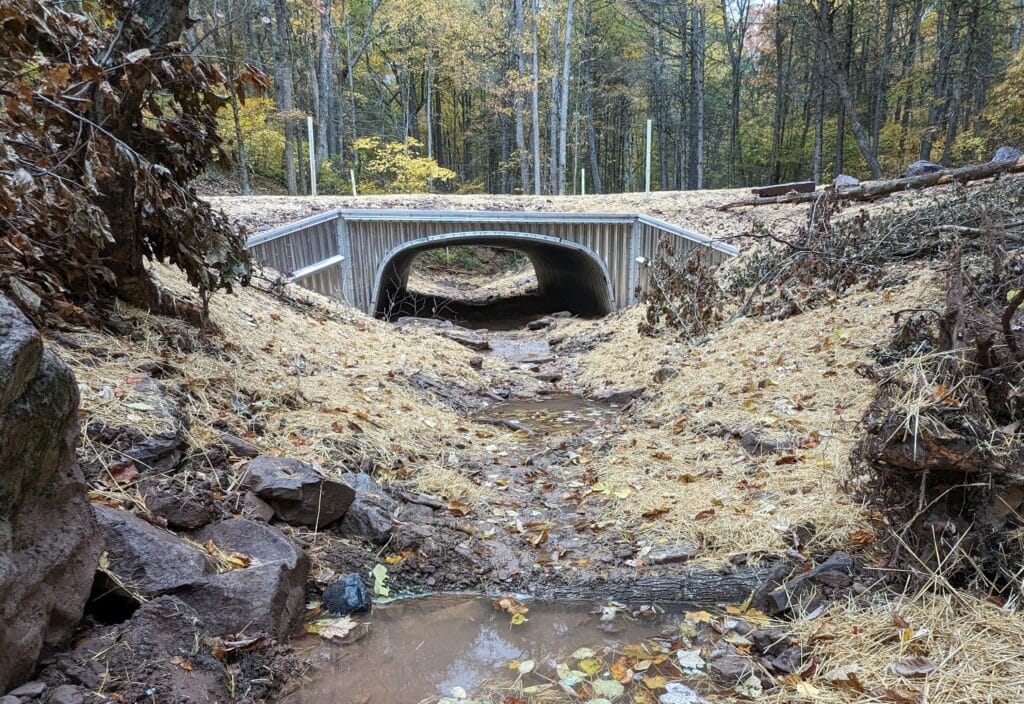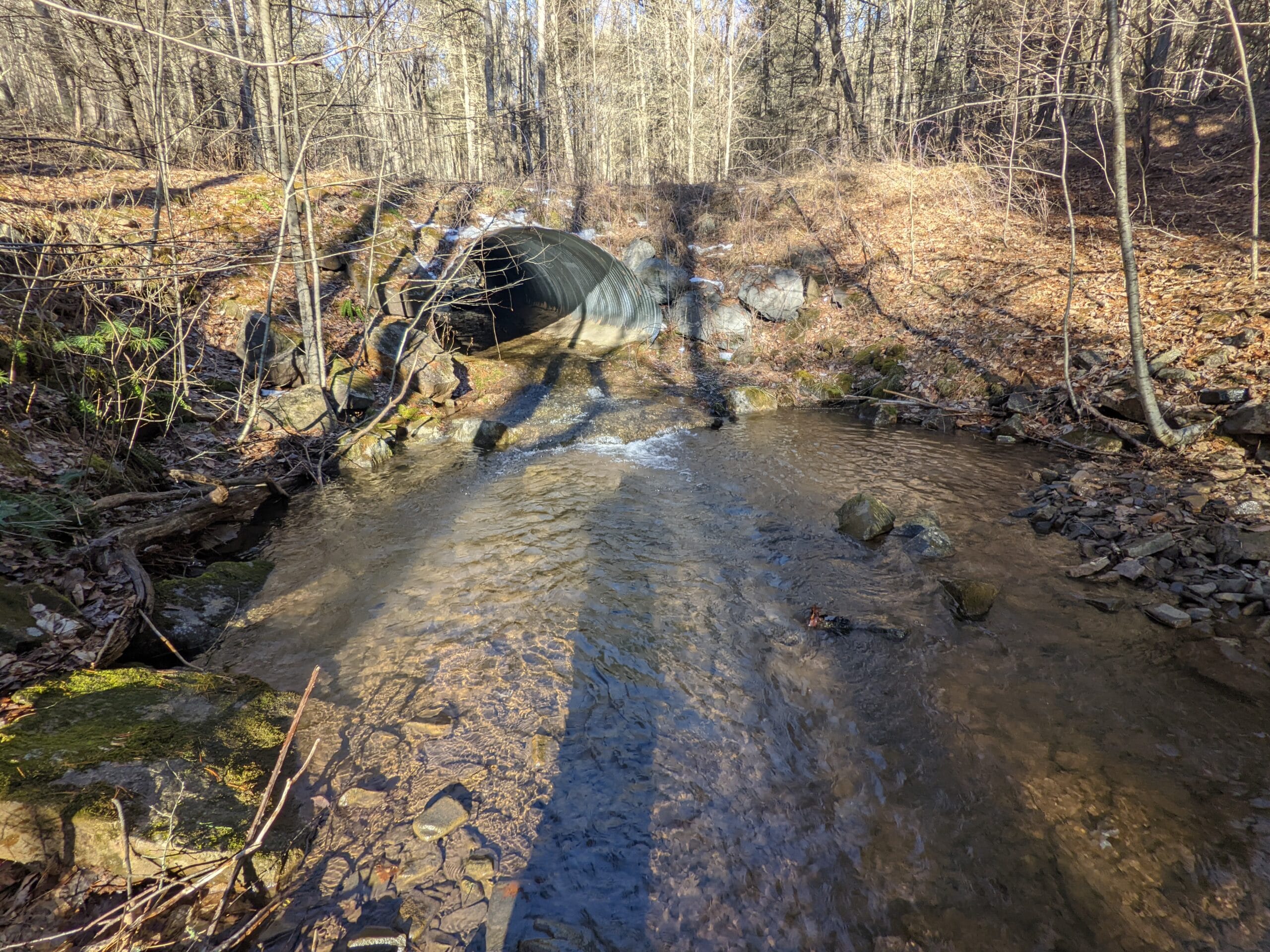Finding 45 brook trout in a single pool in a small creek may sound like a good thing. In the case of a small stream in Virginia’s mountains it was anything but. The fish were trapped in a small plunge…
Finding 45 brook trout in a single pool in a small creek may sound like a good thing.
In the case of a small stream in Virginia’s mountains it was anything but.
The fish were trapped in a small plunge pool beneath a perched culvert on Railroad Hollow, a small brook high in the Dry River watershed.
The waterfall created by the lower end of the culvert kept the fish from moving upstream. Low flows kept them from moving downstream.
In the early fall of 2023, Trout Unlimited’s team in Virginia took out the offending culvert and replaced it with a structure through which fish and other stream dwelling creatures could pass.

“The Forest Service identified this culvert as barrier that was a priority through the agency’s North Shenandoah Mountain project,” said Seth Coffman, the TU staffer who oversaw the project.
The stream is a tributary to Skidmore Fork, which feeds into a small reservoir, Switzer Lake, that serves as a water supply source for the city of Harrisonburg.
The crossing connects to several other Forest Service roads that access not only the Flagpole Knob area of the George Washington National Forest lands but also one private in-holding. The area is popular with off-road vehicle enthusiasts.
The upgraded crossing will provide better access during high flow because it will reduce flooding. It reconnects a mile-and-a-half of upstream habitat.
Funding from the Forest Service, including from the Bipartisan Infrastructure Law, helped pay for the project. The National Fish and Wildlife Foundation’s Chesapeake Bay Stewardship Fund also contributed to the project.



